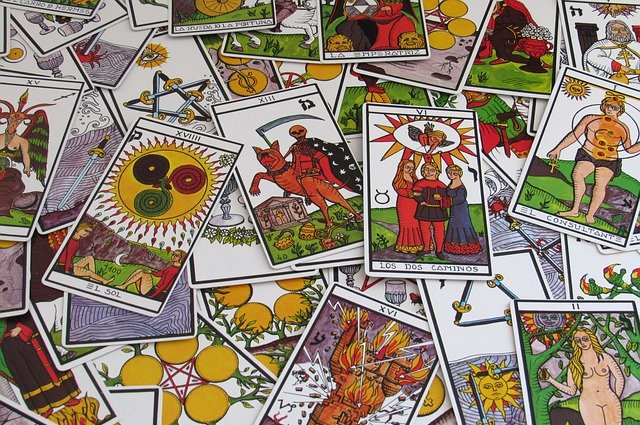How do tarot cards and readings work?

Tarot cards are one of many forms of divination. They are commonly used to measure potential outcomes and evaluate influences surrounding a person, an event or both. The technical term for tarot reading is taromancy (divination through the use of tarot cards), which is a subsection of fortune telling (divination through cards in general).
Making predictions through tarot cards
Tarot readers commonly believe that the future is fluid and that absolute predictions of future events are impossible. Therefore, when they interpret the layouts of the tarot cards, they focus on identifying the possible outcomes for the person receiving the reading (called the "subject"), as well as examining the influences related to the problem in question.
Tarot readings are intended to arm the subject with additional information so that they can make more informed choices. It is a path of research for subjects who face difficult choices, but must not be seen as a guarantee of the final results.
Spreads
Tarot spread Celtic cross
Arrange your cards in this order for the Celtic cross. Patti Wigington
The tarot reader begins a reading by distributing a series of cards from the deck and arranging them in an arrangement called a spread. Each card in the spread is interpreted by the reader based on its face value and position in the spread. The diffusion position indicates a different aspect of the question asked.
Two of the most common spreads are the Three Destinies and the Celtic Cross.
The Three Fates is a three card spread. The first represents the past, the second represents the present and the third represents the future. The Three Fates is one of many three card spreads. Other spreads cover a trio of topics such as the current situation, obstacle and tips for overcoming the obstacle; or what can change the subject, what cannot change and what it may not be aware of.
The Celtic cross is made up of ten cards representing elements such as past and future influences, personal hopes and conflicting influences.
Major and minor arcana
Standard tarot decks have two types of cards: major and minor arcana.
Minor Arcana are similar to a normal playing card deck. They are divided into four seeds (chopsticks, cups, swords and pentacles). Each suit contains ten cards numbered 1 to 10. Each suit also includes the face cards referred to as the page, knight, queen and king.
The Major Arcana are autonomous cards with their unique meanings. These include cards such as the Devil, Strength, Temperance, Hangman, Fool and Death.
Sources of knowledge
Different readers have different ideas on how the right papers for a given topic and its problems are those that are distributed to the diffusion. For many psychics and magical practitioners, cards are simply a means of helping to trigger the reader's particular talent in perceiving a subject's situation and helping them understand it. Other readers may speak of tapping into a "universal mind" or "universal consciousness". Still others attribute the influence of the gods or other supernatural beings to arrange the cards in a meaningful order.
Some readers refrain entirely from explanations, recognizing that they don't understand the details of how tarot spreading works but still believe that it actually works.
Power of the cards
Few readers suggest that anyone could take a tarot deck and produce a meaningful reading. Often, the cards are seen as powerless and are simply a useful visual cue to help the reader. Others believe that there is some power in the cards that accentuates the reader's talents, which is why they will only work from their decks.